Long lasting instrumental relationships are something we love to root for. Neil Young and Old Black, Willie Nelson and Trigger—those are inseparable pairings of artist and instrument where, over the course of long careers, those guitars have been shaped, excessively in both cases, by the hands that play them. Eddie Van Halen went steps beyond with Frankenstein, assembling the guitar to his needs from the get-go. But few rock ’n’ roll relationships imbue the kind of warm-and-fuzzy feelings as the story of Brian May and his dad building Red Special, the very instrument that hung around his neck for his rise to superstardom and beyond.
Together, with a legion of Vox AC30s and a few effects, May and his homemade Red Special have created some of the richest, most glorious guitar sounds that have ever been documented. It is with that guitar in his hands that he’s crafted everything from his velveteen guitar orchestras to his frenetic riffs and luxuriant harmonies to his effortlessly lyrical leads, which matched the dramatic melodic motifs of Freddie Mercury in one of the most dynamic lead singer/guitarist pairings in rock music.
Although it has a smaller role in his body of work, overshadowed by such an accomplished, prolific electric guitar C.V., May’s acoustic playing is a major part of the story of his music. His bold opening strums of “Crazy Little Thing Called Love” are some of the most recognizable D-major chords in the classic-rock canon, and his supportive work on “Spread Your Wings” adds lush dimension between Freddie Mercury’s arpeggiated piano chords and his rich electric guitarmonies. The multi-tracked 12-string figure that opens “’39”—his “cosmic folk song”—is among his most recognizable.
It’s a surprise, then, that when I ask May about the acoustic guitars used while recording with Queen, the most notable is his Hallfredh acoustic, a “cheap as hell” guitar from a virtually unknown brand. “My little old acoustic, which I swapped with my dear friend at school,” he reminisces. “The strings were so low on it that everything buzzed like a sitar. I capitalized on that and put pins on it instead of the bridge saddles, and you can hear that stuff on ‘The Night Comes Down’ [from Queen]. I used it all the way through Queen’s recordings, like on ‘Jealousy’ [from Jazz] years later and lots of things.” He also recalls his Ovation 12-string and some others, but the Hallfredh remains in the foreground of his acoustic memories.
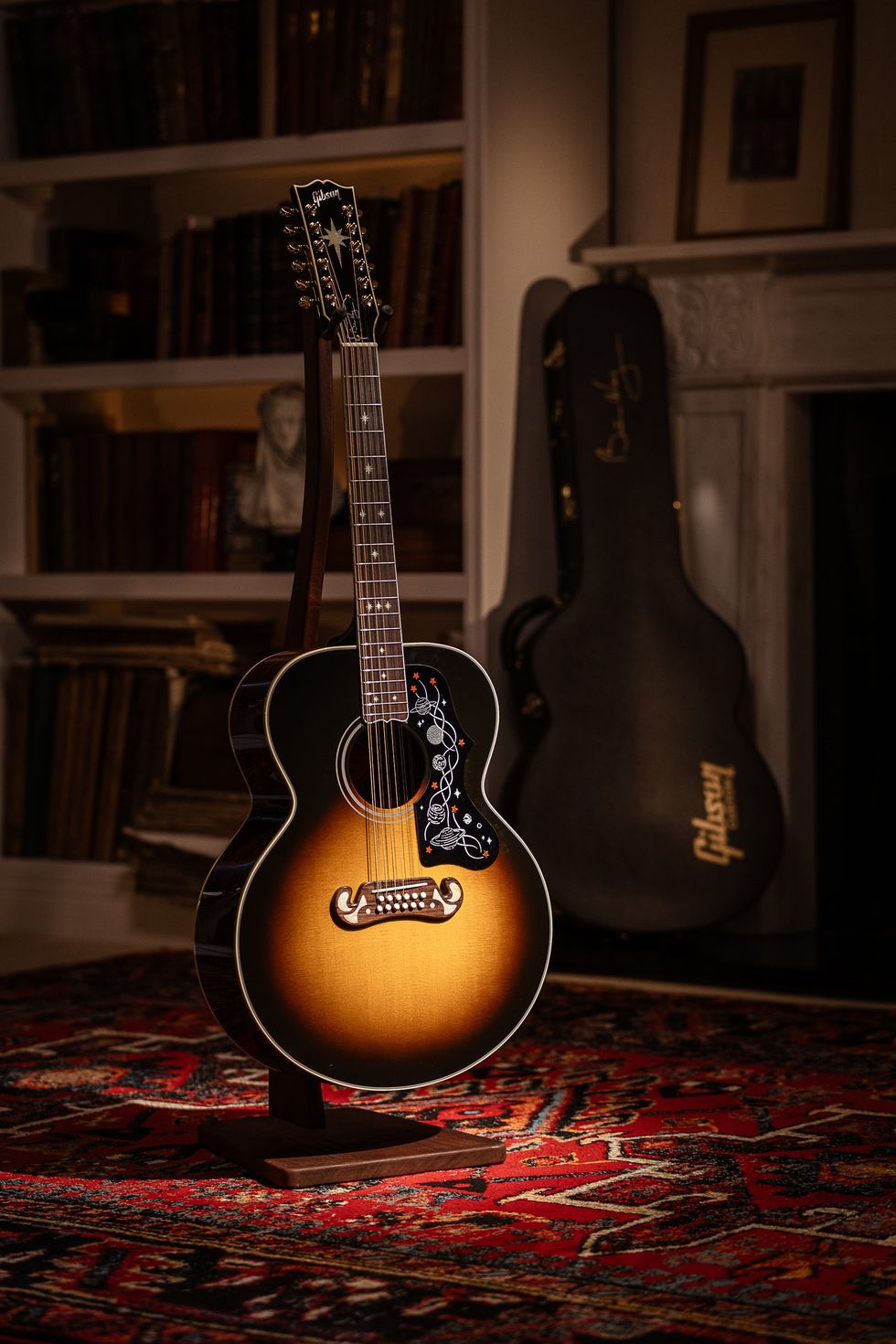
The cosmic inlays on the Brian May SJ-200 represent the rock legend’s work in the field of astrophysics, in which he holds a PhD.
In recent years, May has been performing the 1975 ballad and emotional Mercury vehicle “Love of My Life,” which appears on A Night at the Opera, as an acoustic tribute to the late singer. May and his acoustic 12-string sit center stage each night as he leads the crowd through a heartwarming rendition of the song, joined at its climax by a video of Mercury. For that powerful, commanding moment, he’s relied on “a number of guitars we won’t mention, but it just came to the point where I’m thinking, ‘This isn’t sounding as good as I would like it to.’”
At one concert, a Gibson representative who was around piped up and offered to make him a guitar to his specs specifically for this piece. “I was surprised that they would notice me in the first place,” May recalls, “because part of me never grew up.” A surprising take from a rock star of such stature, but he explains, “I’m still a kid who was reading the Gibson catalogs and not able to afford anything, seeing the SGs and the Les Pauls and dreaming of being able to own a Gibson guitar. I now have a couple of the SGs, which I absolutely love, but, of course, I made my own guitar and I now have my own guitar company, so I went a different way. But to me this was a joy that they would offer to make me a guitar, which I could take out onstage.”
After building one for the guitarist, Gibson created a limited edition run of 100 instruments of the new model, called the Brian May SJ-200 12-string. Featuring a AAA Sitka spruce top with a vintage sunburst finish, AAA rosewood back and sides, a 2-piece AAA maple neck with walnut stringer, and a rosewood fretboard, it’s a top-of-the-line acoustic. The most noticeable feature on the SJ-200 is probably the string arrangement, which is flipped—as is most commonly found on Rickenbacker 12-strings—with the lower string above the higher string in each course. May has made that modification on other 12s, because he likes to string the high string first when fingerpicking. “You get an incredibly pure sound that way,” he points out. “‘Love of My Life’ is a good example—if it’s strung the other way, it sounds very different.”
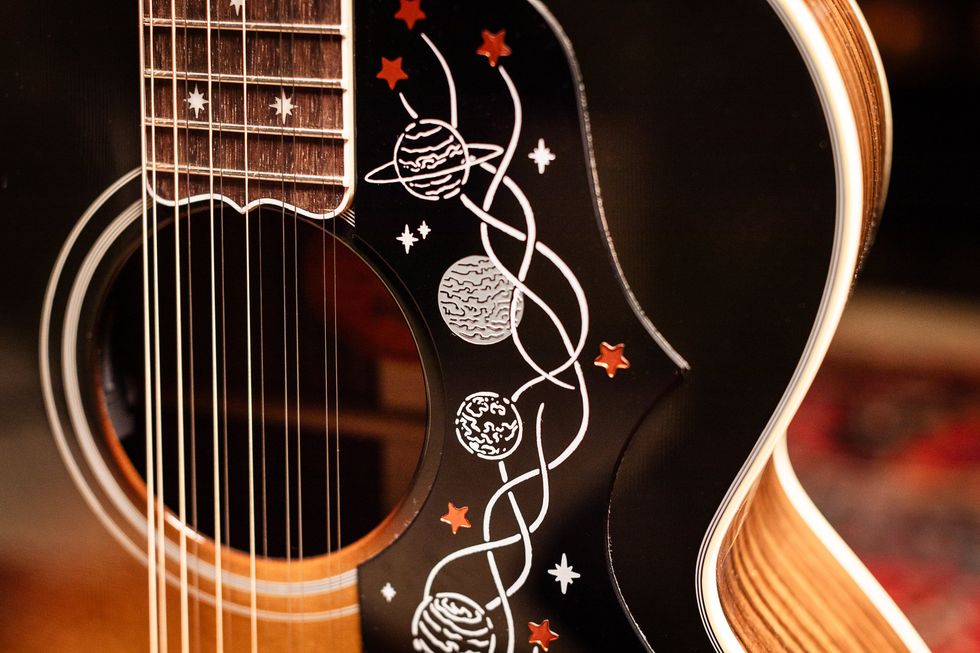
On its pickguard, all seven of the other planets in our solar system are etched. The shaded one, close at hand, is Mercury, a tribute to the Queen singer.
May’s aesthetic customizations draw from his astrophysics work and add a personal sparkle to the large-bodied acoustic. The pickguard features a custom design with the seven other planets in the system, which is to say, not Earth. Mercury sits close at hand, a tribute to the singer. The fretboard and headstock include 8-point star inlays—to give a “more cosmic feeling”—that are made from agoya shell, as are the bridge inlays.
“It became a discussion about art and science, which I love,” May says of the design process. “That’s probably the biggest thread in my life, this path trodden, some people would say, between art and science. But I would say that they’re the same thing. So, I just tread among art and science.”
May’s own Gibson has already appeared in concert during the “Love of My Life” segment of Queen’s show, and occasionally for “’39.” On social media, where May stays active, many fans caught a glimpse of the guitar when he posted a new song for Christmas Eve. “I just wanted to say Merry Christmas, and that’s the way it came out,” he says. “It was incredibly spontaneous. I wanted it to be a gift. I didn’t want it to be, in any way, a way of advertising or making money or anything. It was just a Merry Christmas gift to whoever wants to listen to me.”
“It became a discussion about art and science, which I love,”
While that was one of the first things created with the new Gibson, he has more plans. “I’ve been playing around with it. In fact, we’ve been dropping the D,” he says, hinting at some future plans with guitarist-vocalist Arielle. “I have quite a few songs with the bottom D dropped. I haven’t normally played them acoustic or 12-string, but I’m discovering that some of that sounds really good. It gets such a lovely big clang and a big depth to it.”
Recently, May spent a great deal of time looking back as the band prepped the Queen I box set. The remixed, remastered, and very expanded version of their 1973 debut, Queen—they’ve added the “I” here—which was released last October, encompasses a rebuild of the entire record, plus additional takes, backing tracks, a version recorded specifically for John Peel’s BBC Radio 1 show, and a 1974 live concert recording from London’s Rainbow Theatre.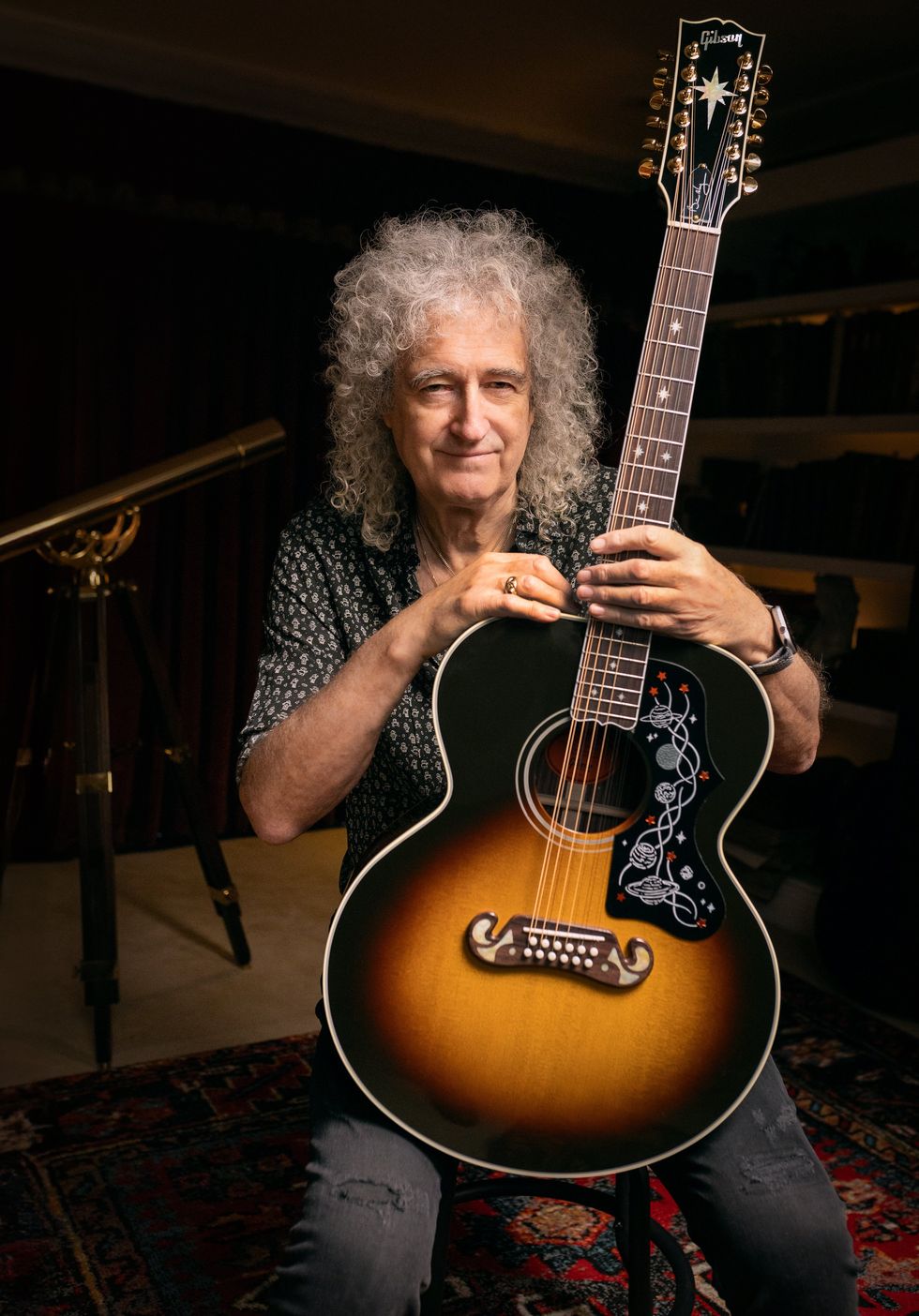
May says of his new Gibson: “To me, this was a joy that they would offer to make me a guitar."
Revisiting this early document over 50 years later, it’s amazing to hear how well-developed the guitarist’s sound already was—full of the propulsive riffs and harmonies that would become part of his signature. May concurs, “You go back into these tracks quite forensically, and I hear myself in the naked tracks and I think, ‘Wow, I didn’t realize that I could do that at that point.’ It must have happened very quickly.”
Reflecting on those formative times, he continues, “I think there’s a period of just exploding, knowing what it is in your head, and striving to make what you play match what’s in your head. But I see it in other people, too. Sometimes, I go back and listen to the first Zeppelin album, and they were pretty young when they made that. But I think, ‘My God, how did they get that far and so quick?’”
“I thought guitars do work as primary orchestral instruments, so that’s what I want to do.”
Before Queen, May had already recorded a two-part guitar solo on the song “Earth,” a late-’60s track recorded with his earlier band, Smile, which also featured future Queen drummer Roger Taylor. While that lead certainly points toward the ambition in May’s later work, its raw untamedness doesn’t quite show evidence of his ultimate precision. But he says he had it in mind from early on. “There weren’t any more tracks to do three parts” when they recorded with Smile, he says, “but I always dreamed of it. It goes back a long, long way to hearing harmonies in other ways from the Everly Brothers, from Buddy Holly and the Crickets, from all sorts of things that we were listening to when we were kids.
“I wanted to make the sound of an orchestra just using guitars, and there’s other little inspirations along the way,” he continues. “Jeff Beck was an inspiration because there’s that wonderful track, ‘Hi Ho Silver Lining,’ which Jeff hated. But there’s one bit where he double-tracks the solo and in just one point it breaks into a two-part harmony, probably by accident. I guess I should have asked him—damn well wish I had. But that sound echoed in my head, and I thought guitars do work as primary orchestral instruments, so that’s what I want to do. I could hear it in my head for a long time before I could make it actually happen.”
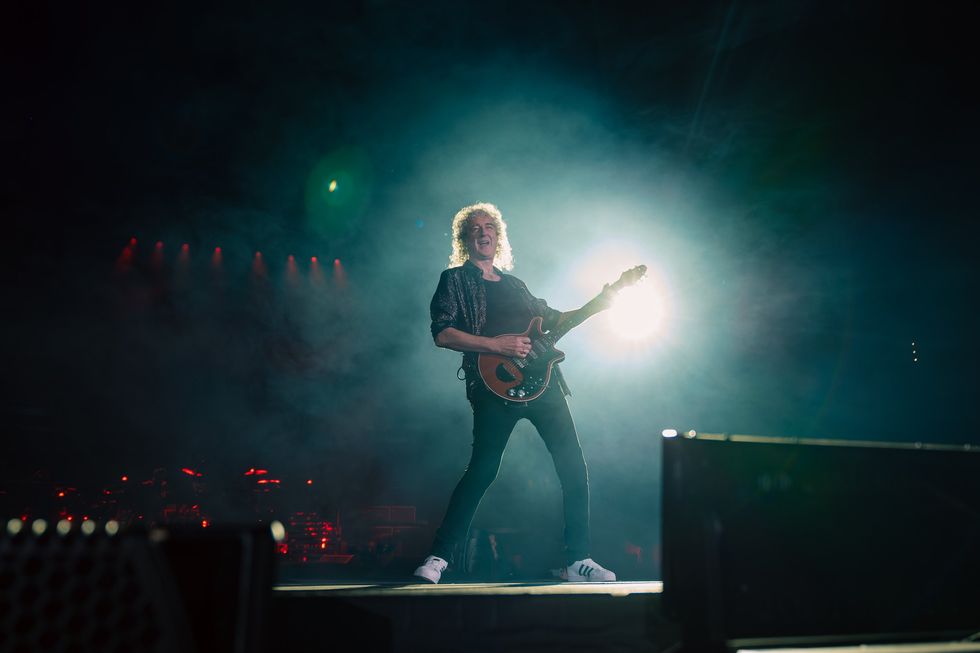
Brian May and his Red Special at a recent concert.
Photo by Steve Rose
Though the Queen recording sessions gave the guitarist his first opportunity to explore the larger harmonized sections that would become part of his signature, many of the sounds on the record left the band dissatisfied. Recorded at Trident Studios in London, the young band could only afford to use the room during downtime. Over the course of four months, they had sessions, usually at night, with in-house producers John Anthony and Roy Thomas Baker, both early supporters. However, the Trident style and sound wasn’t what Queen had in their collective ears, and they’ve remained unhappy with the sonic quality of their debut all these years.
The drums were the band’s primary issue, which Taylor describes as having a “very dry, quite fat, dead sound.” May’s tone is recognizably his own. “Well, I’m a very pushy person,” he laughs. “But nevertheless, it was difficult for me, too. Because of this Trident style of recording, the intention was not to have room sound on it. I kind of pushed, I suppose, to have a mic on the back of the amp as well as the front. That gave me a bit more air. I did feel a little hampered and the change is more subtle on the guitar, but it’s there.
“Jeff Beck was an inspiration because there’s that wonderful track, ‘Hi Ho Silver Lining,’ which Jeff hated. But there’s one bit where he double tracks the solo and in just one point it breaks into a two-part harmony, probably by accident.”
“It’s funny because it changed radically as time went on,” he continues. “And I can remember by the time we got to Sheer Heart Attack, Roy is putting mics all over the room and miking up windows in the booth and whatever to get maximum room sounds. It’s certainly nice to go back and make everything sound the way we pretty much would’ve liked it to sound at the time.”
With Queen I out, a new Queen II set is in the works, which May calls “a very different kettle of fish.” The drum sounds on their sophomore effort were more in line with the band’s original vision, but the dense layers of overdubs that famously appear on the record came at a cost. “I think it is the biggest step musically and recording-wise that we ever made,” says May. “But there’s a lot of congestion in there. There’s mud because of all this generation-loss stuff [caused by overdubs], and because we liked to saturate the tape, which seemed like a good idea at the time. It made it sound loud. But if you disentangle that and get the bigness in other ways, I think Queen II is going to sound massive.”
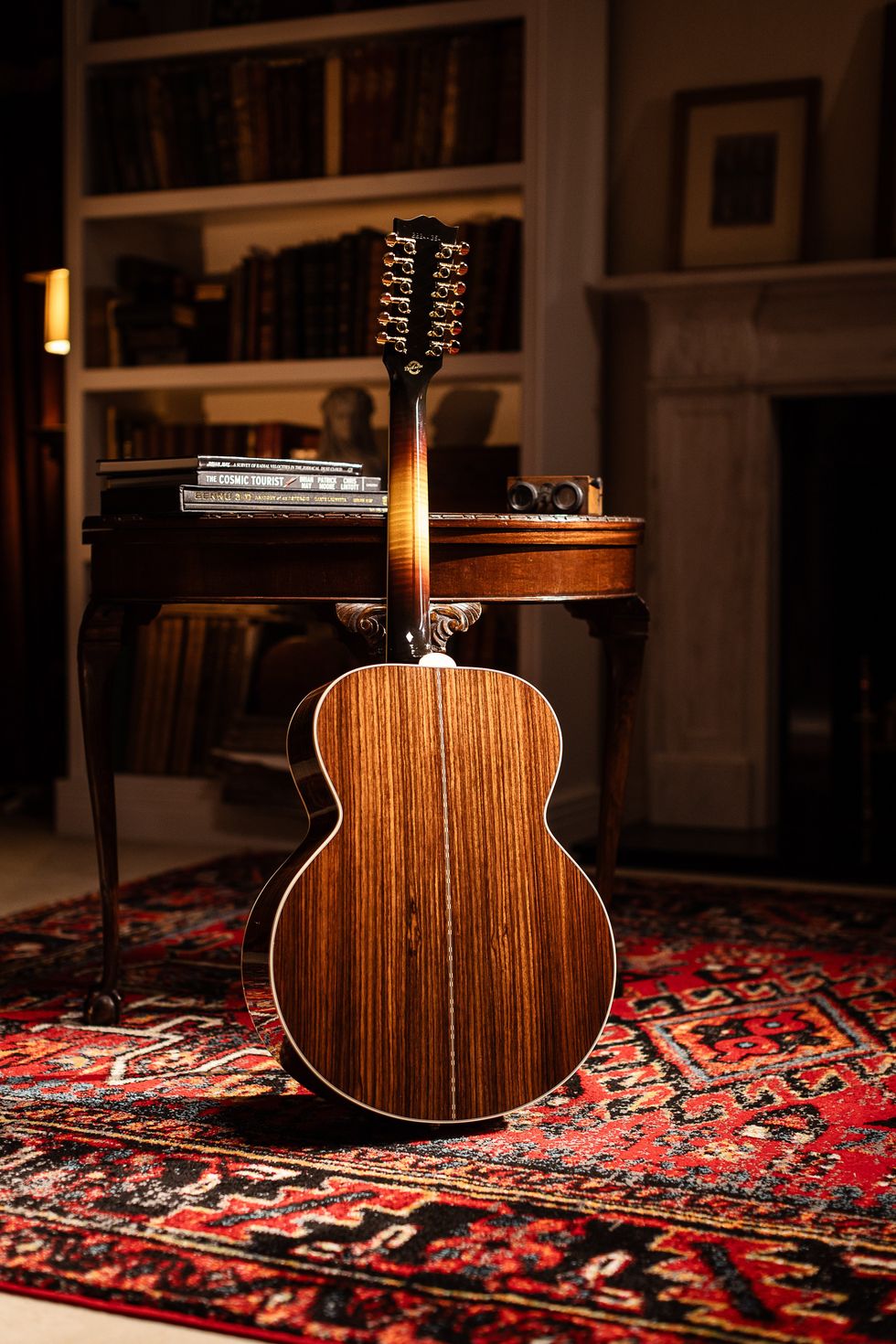
The AAA rosewood back and sides of May’s signature acoustic are stunning.
At 77 years old, May certainly seems to keep his schedule packed with music work—not to mention his animal advocacy and scientific endeavors. In May of last year, though, everything came to a halt when the guitarist suffered a stroke. “I couldn’t get a fork from the table to my mouth without it all going all over the place,” he recalls. “It was scary.” Luckily, things began turning around quickly. “After only a few days, it’s amazing what you can get back. By sheer willpower, you just start retraining your muscle.” Not quite a year on when we speak, May estimates he’s regained 95 percent of his abilities, which, he says, “is enough.
“The short answer is, ‘I’m good,’” he assures.
May is in great spirits and appears excited about all his recent projects, finished and in-progress alike. In this time of looking back on his earliest works, I ask him to think about his beginnings, when he would gaze at Gibson catalogs but had to build his own guitar out of necessity, because, as he points out, he “couldn’t afford anything else.”
So, what would young Brian May, stepping into an afterhours session at Trident, making his band’s debut, think about his new limited edition signature model Gibson acoustic? He takes a long pause. “It would have been …” he pauses again, “unthinkable.”
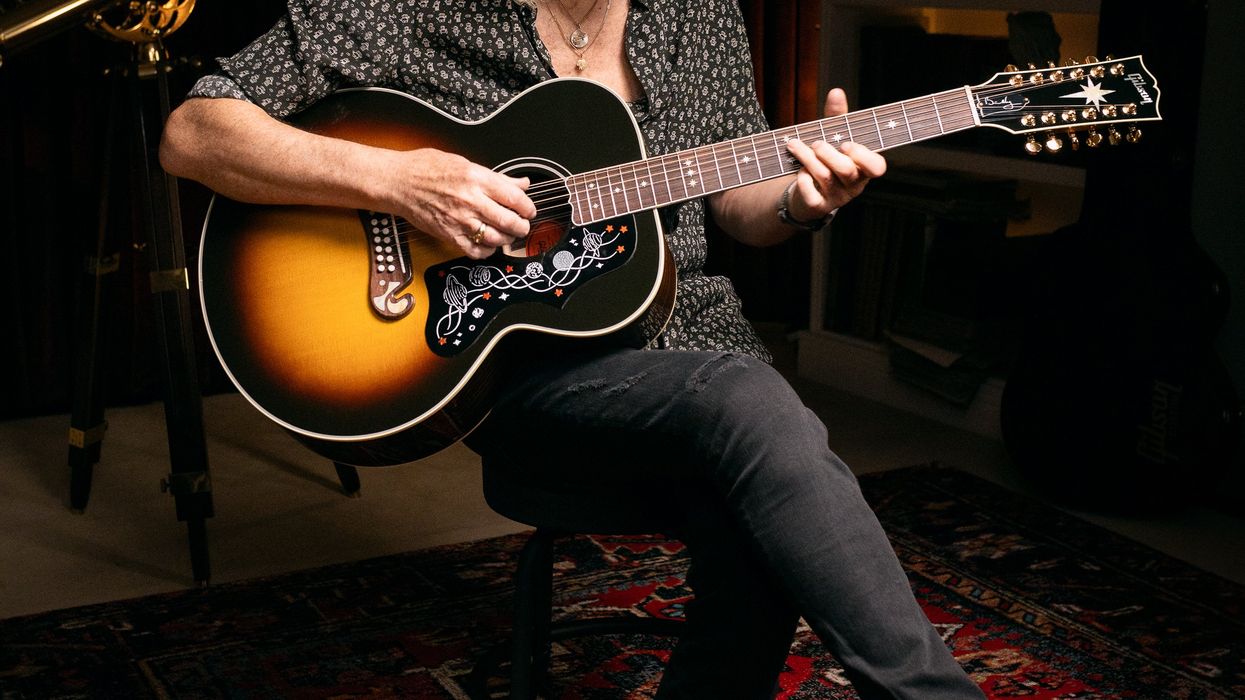

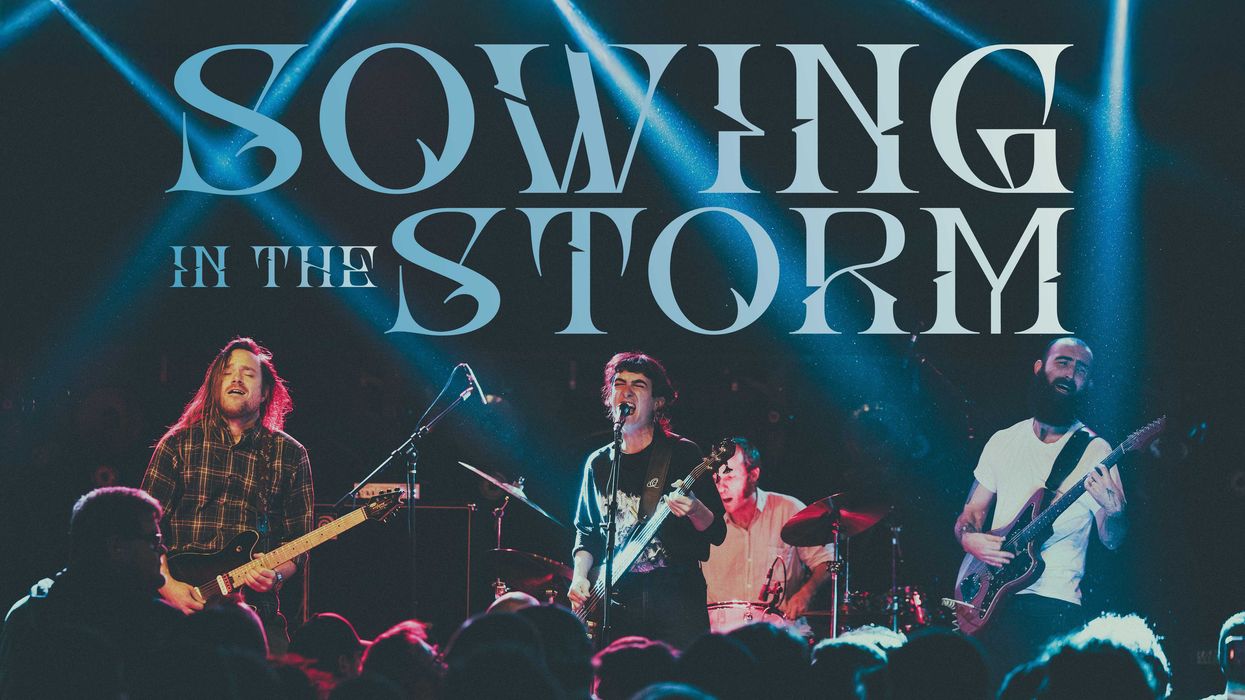

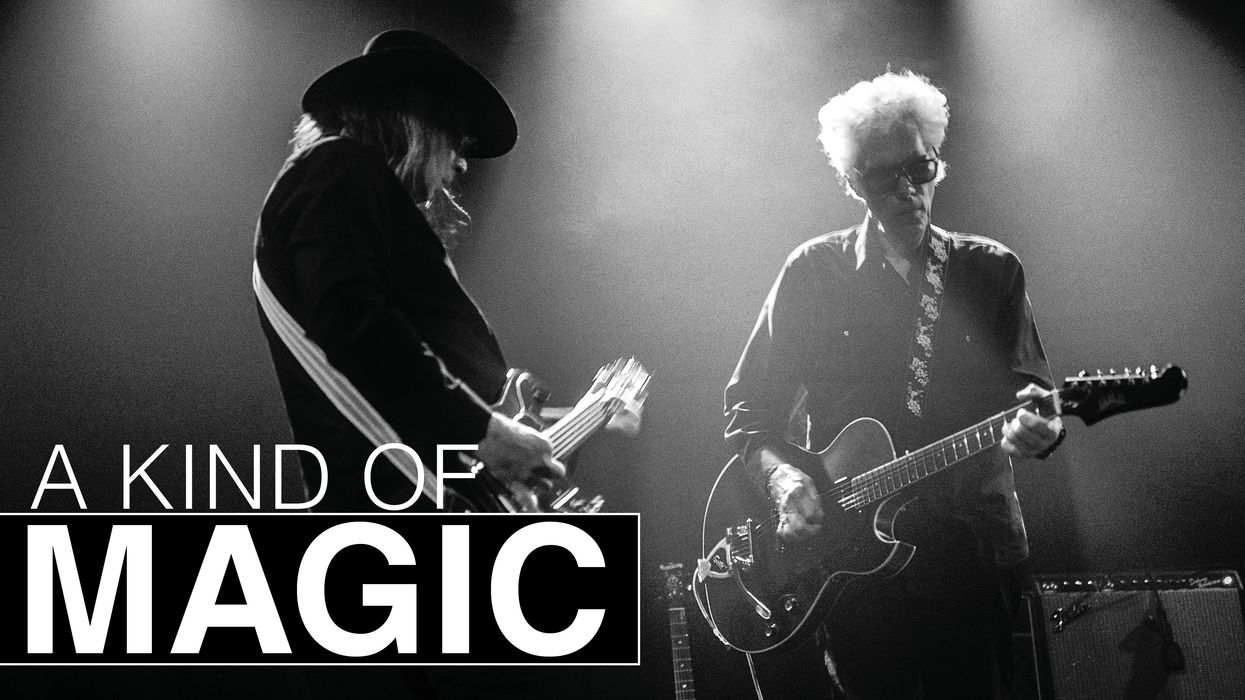
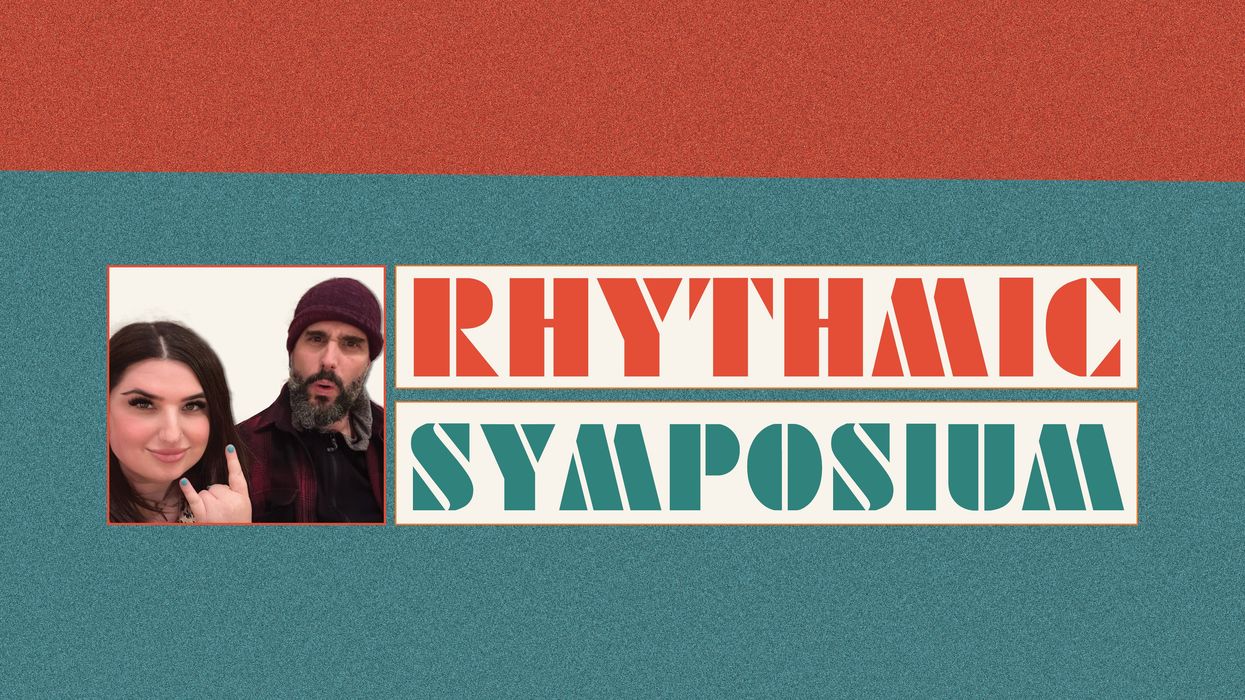

























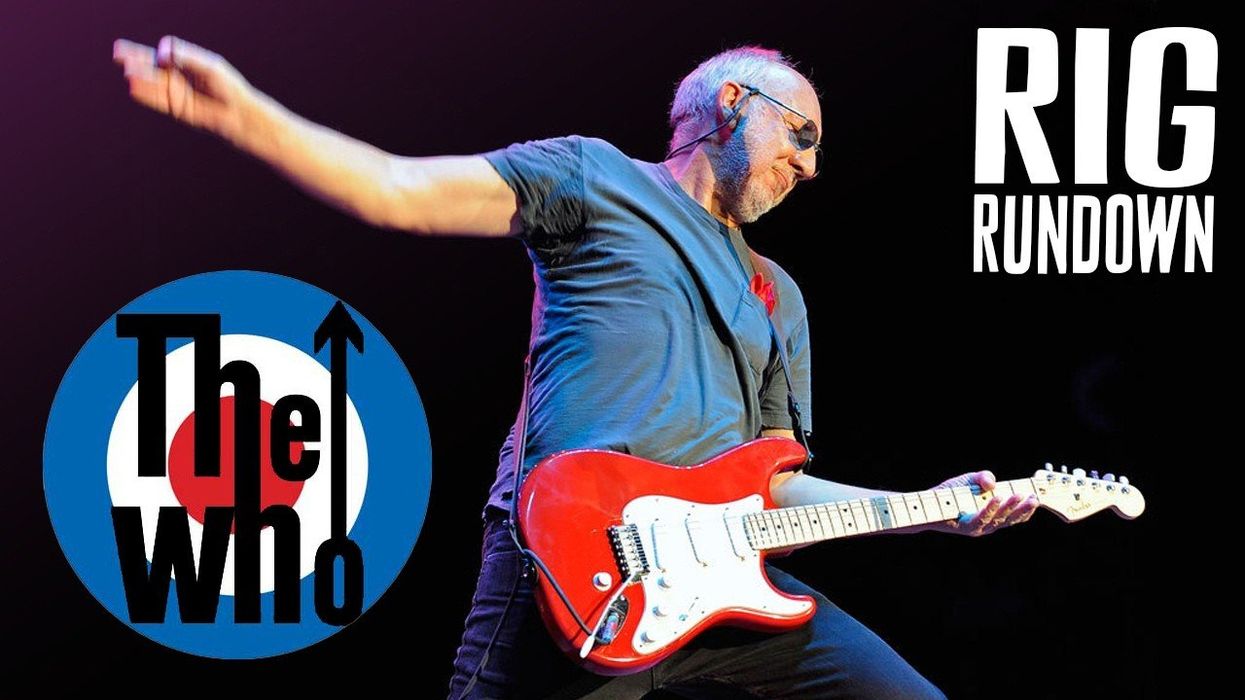
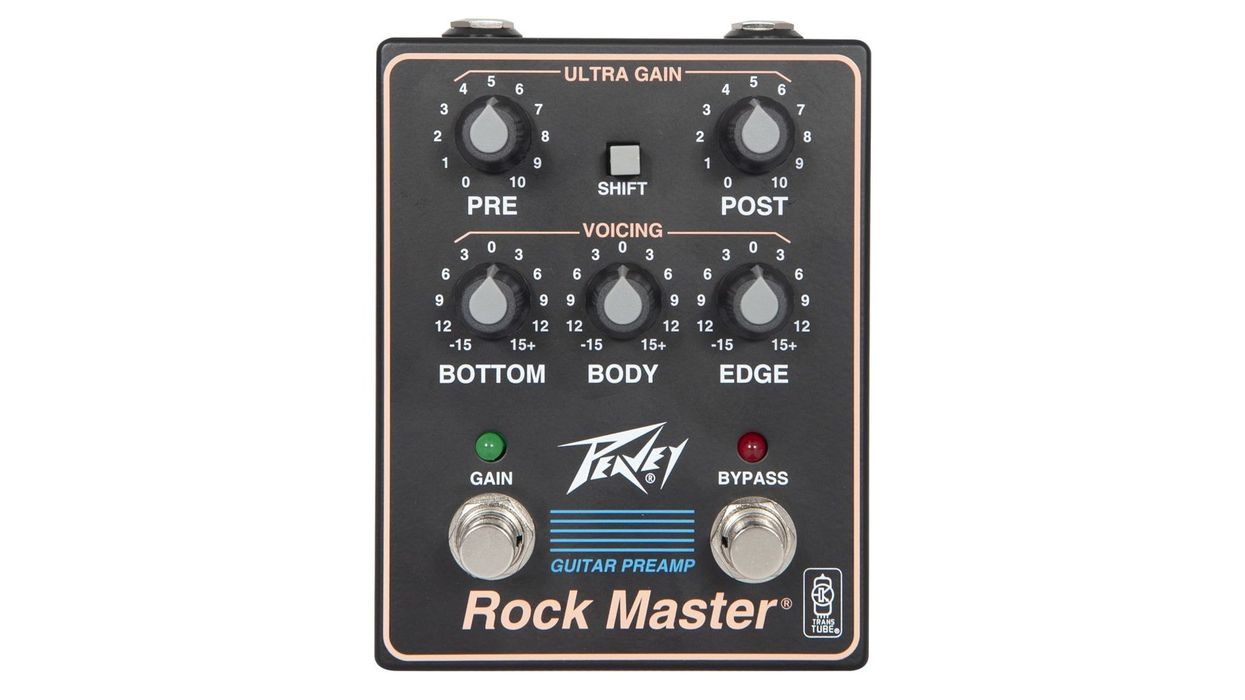

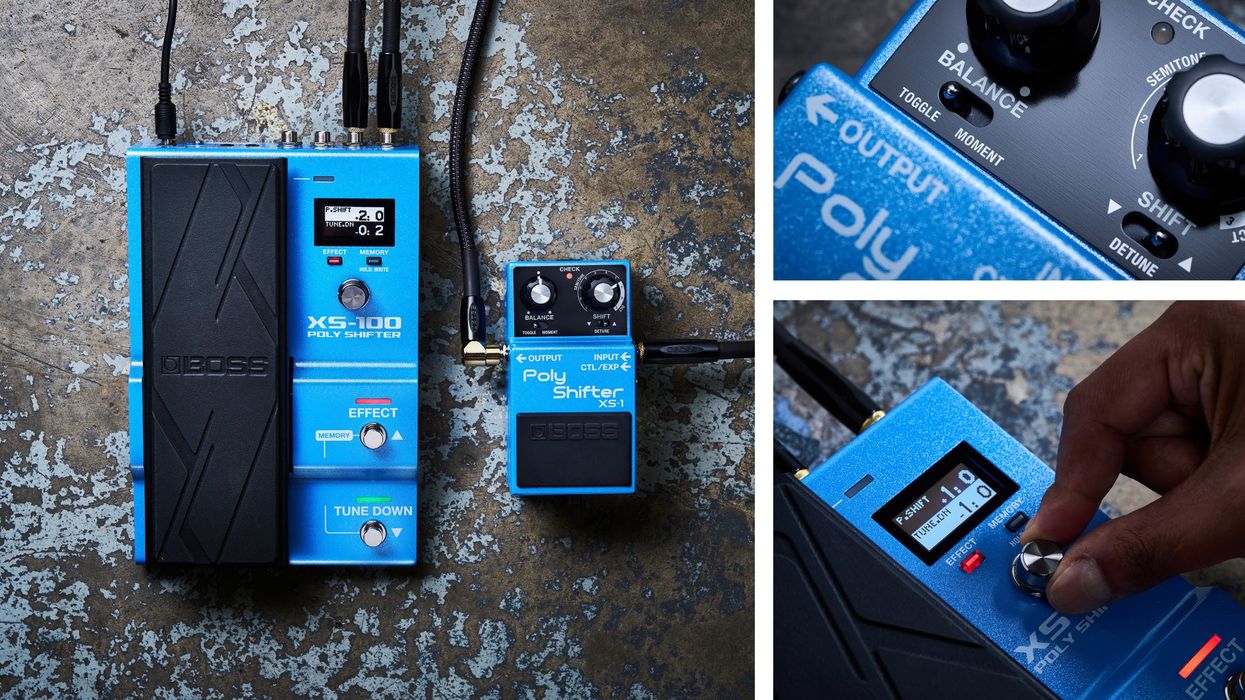
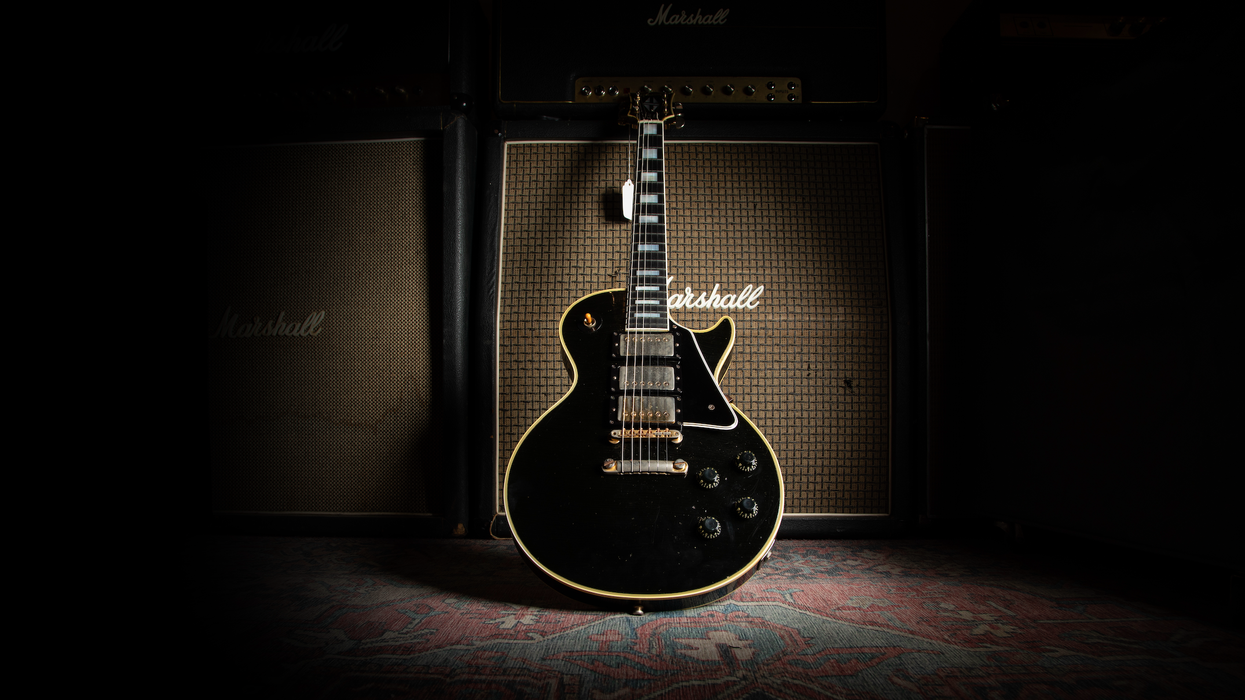



















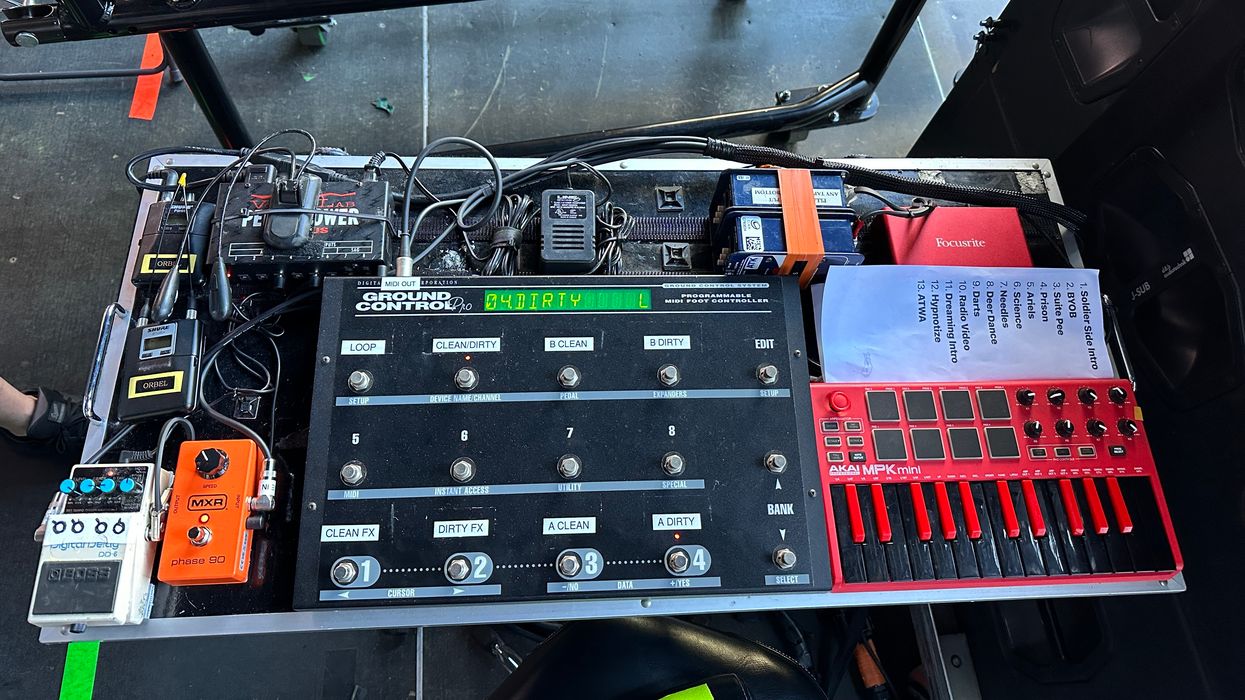



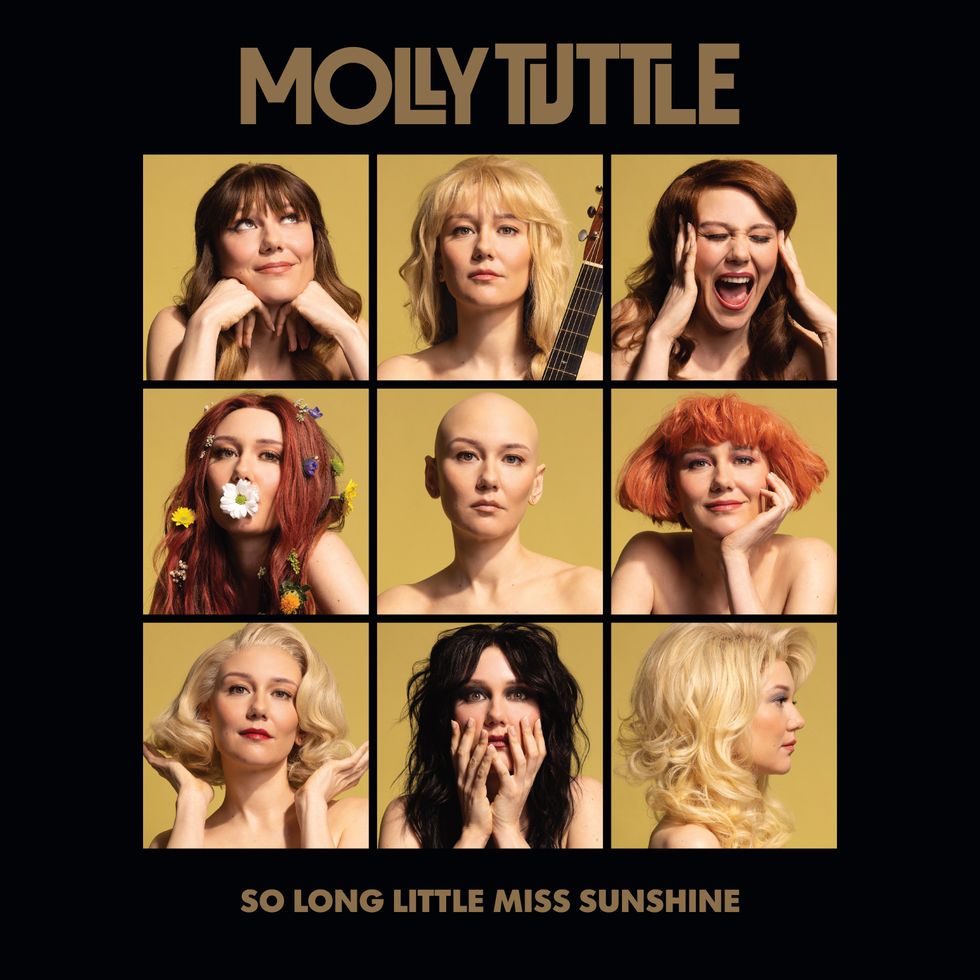
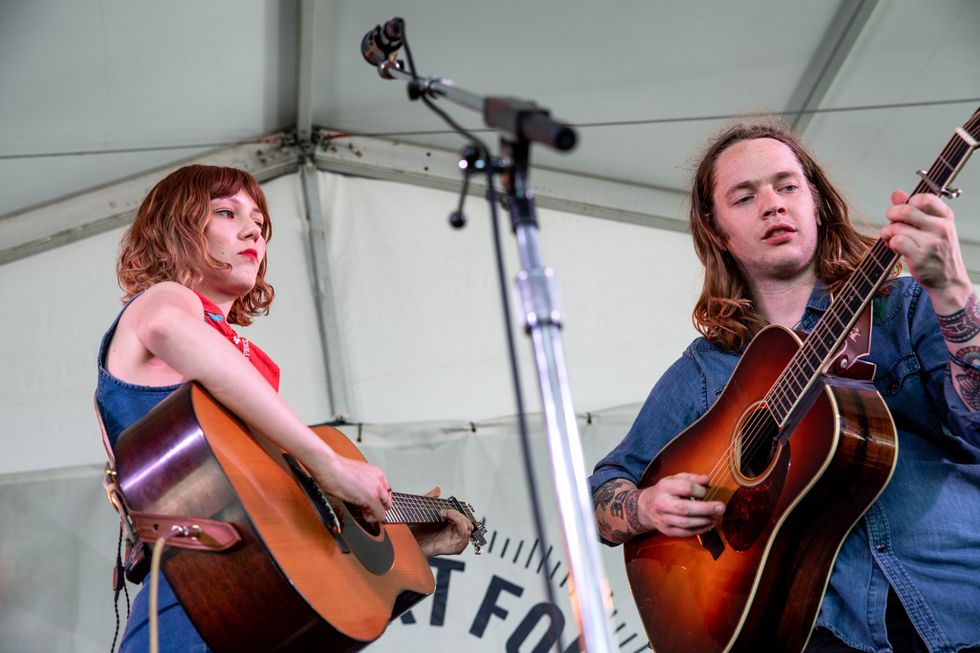
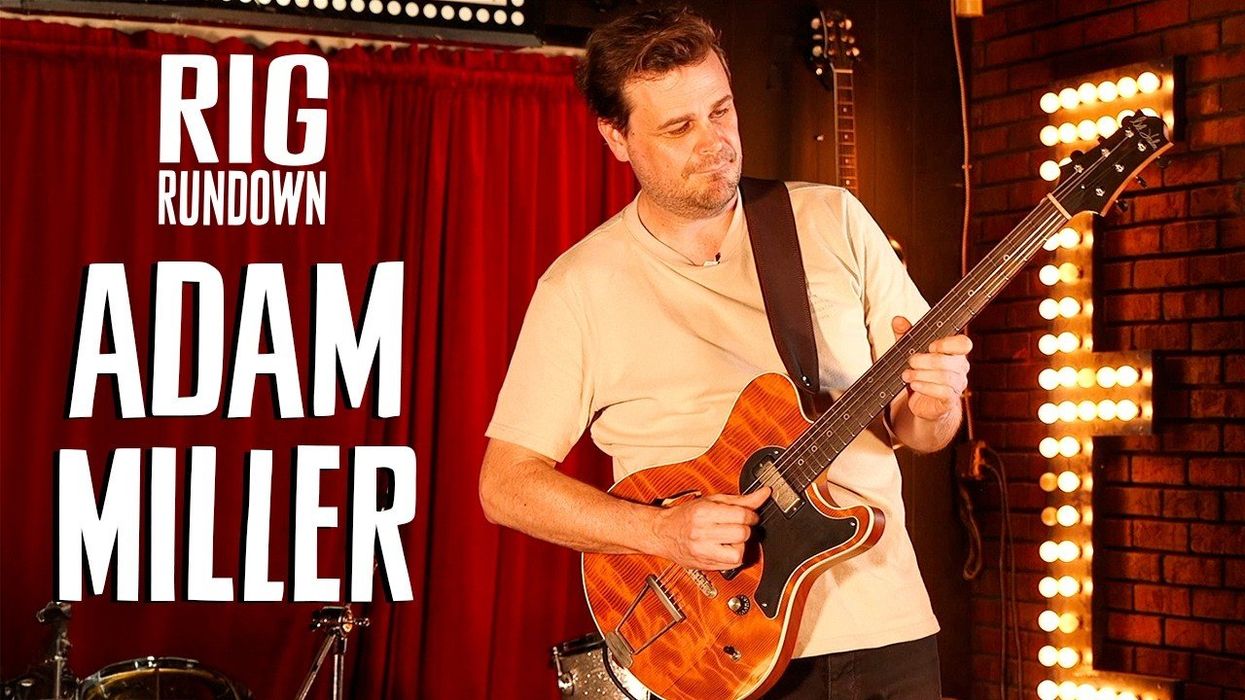
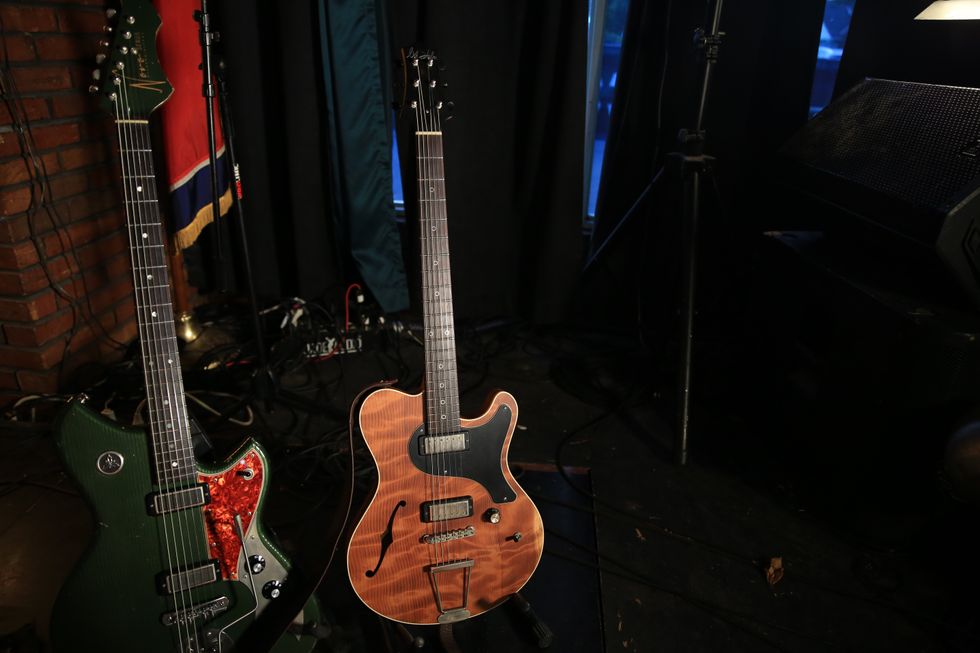
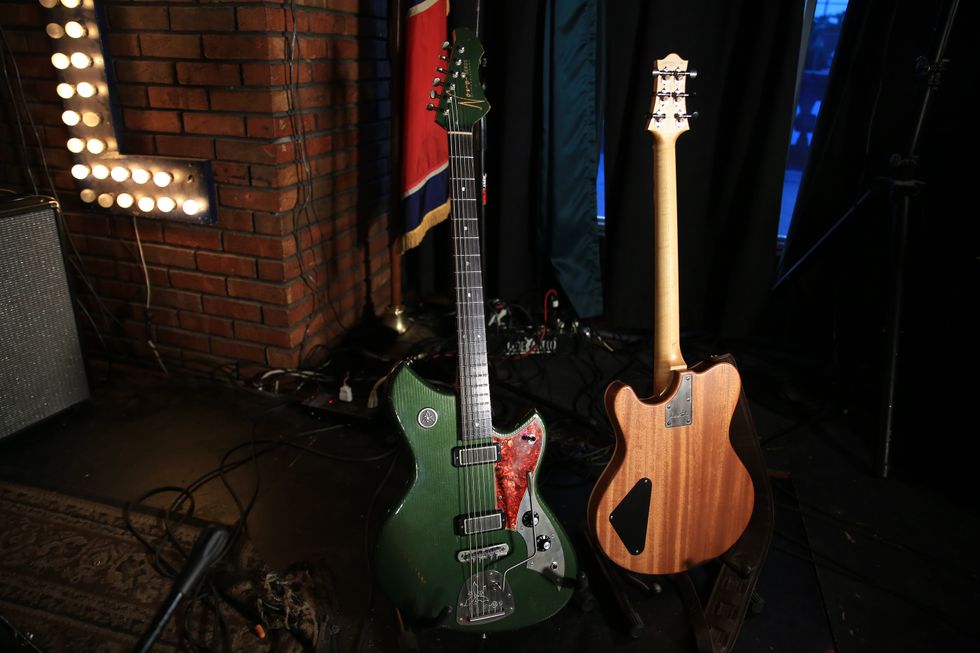
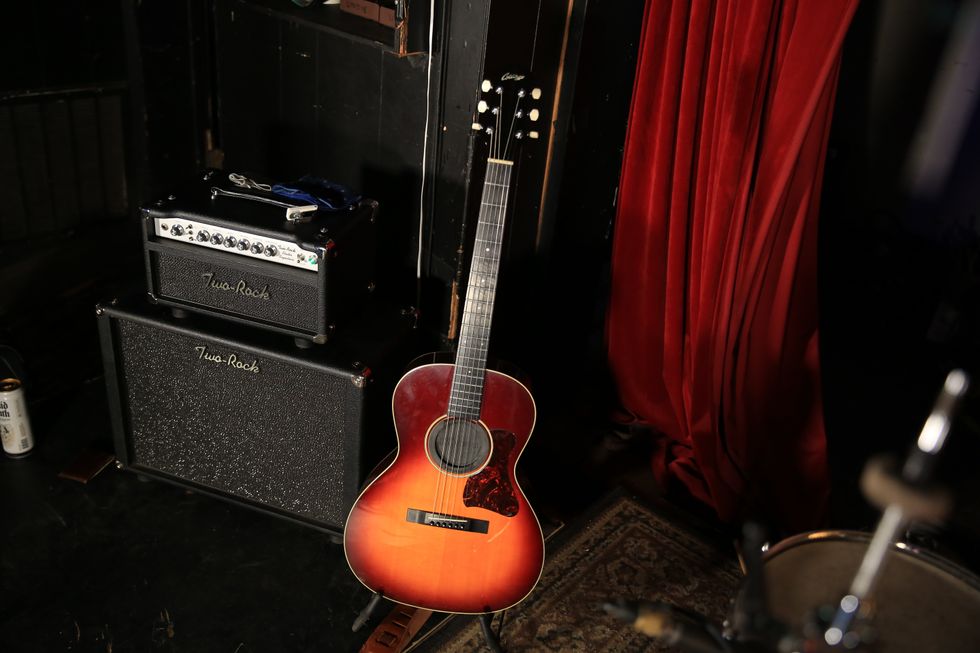
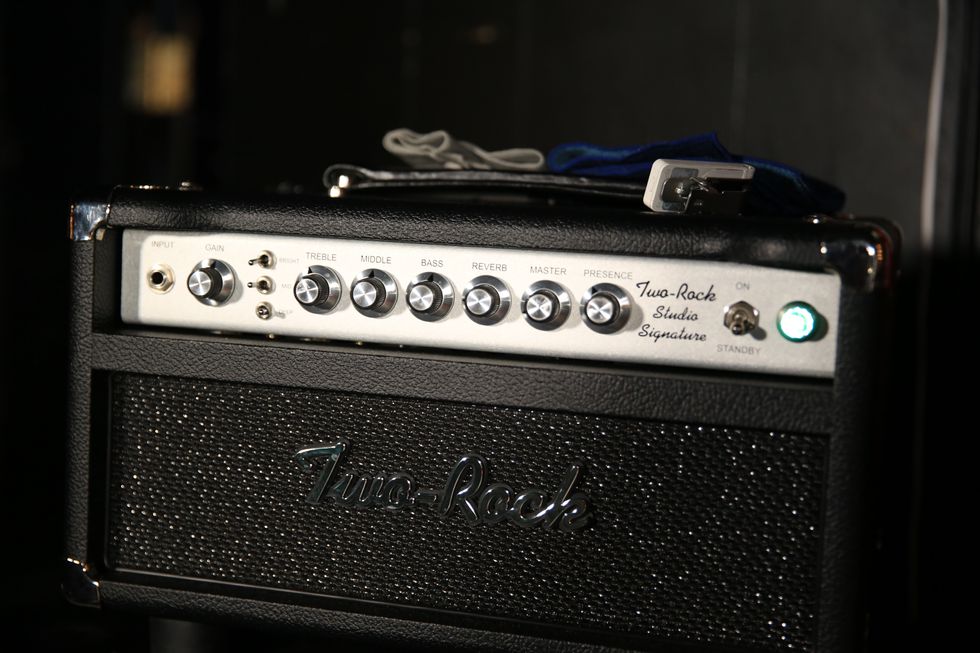
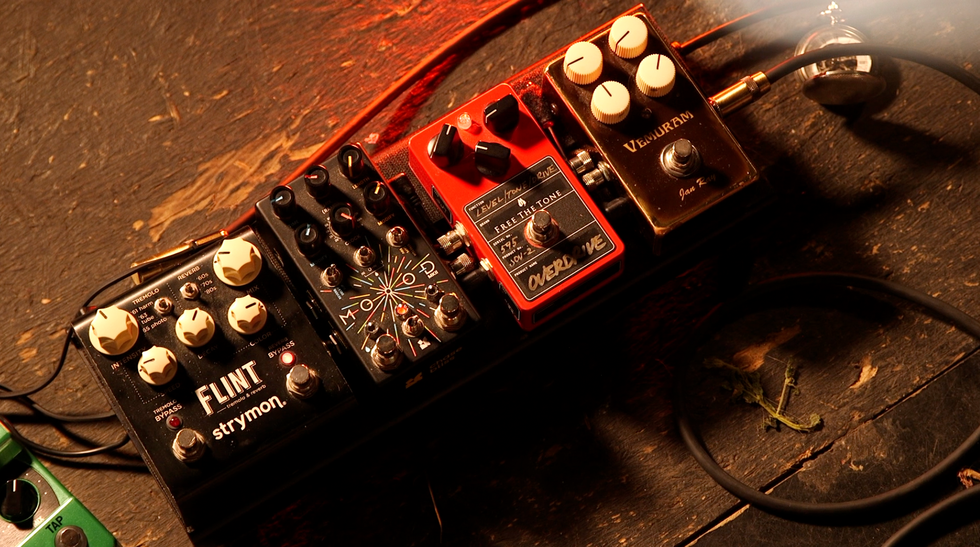
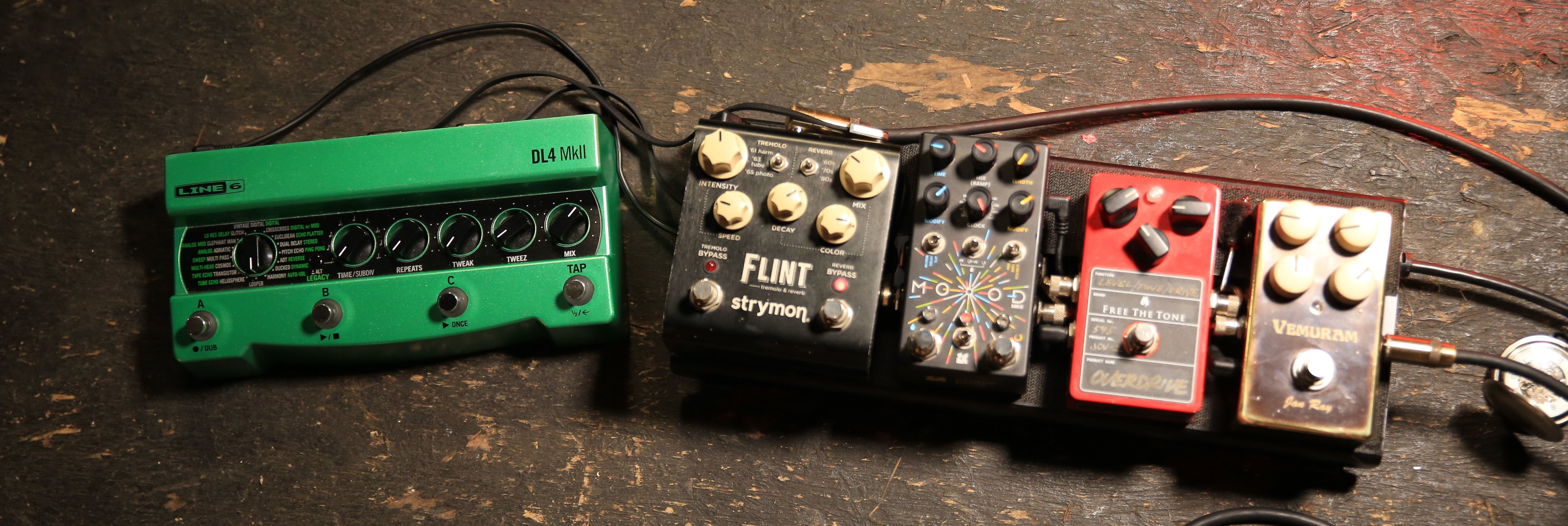 Miller’s Collings runs into a Grace Design ALiX preamp, which helps him fine-tune his EQ and level out pickups with varying output when he switches instruments. For reverb, sometimes he’ll tap the
Miller’s Collings runs into a Grace Design ALiX preamp, which helps him fine-tune his EQ and level out pickups with varying output when he switches instruments. For reverb, sometimes he’ll tap the